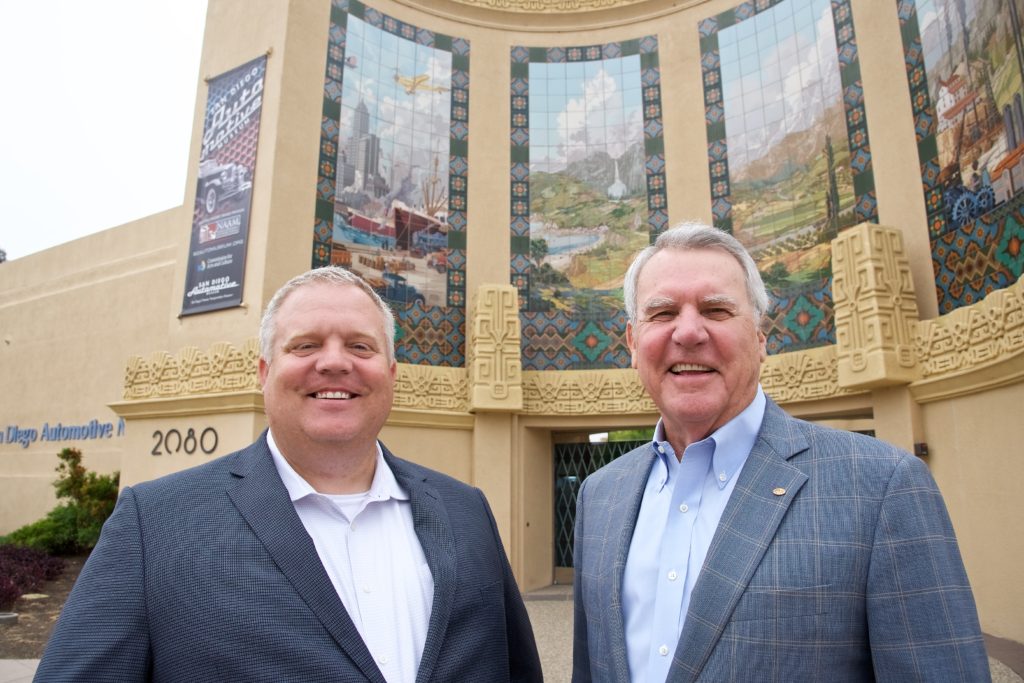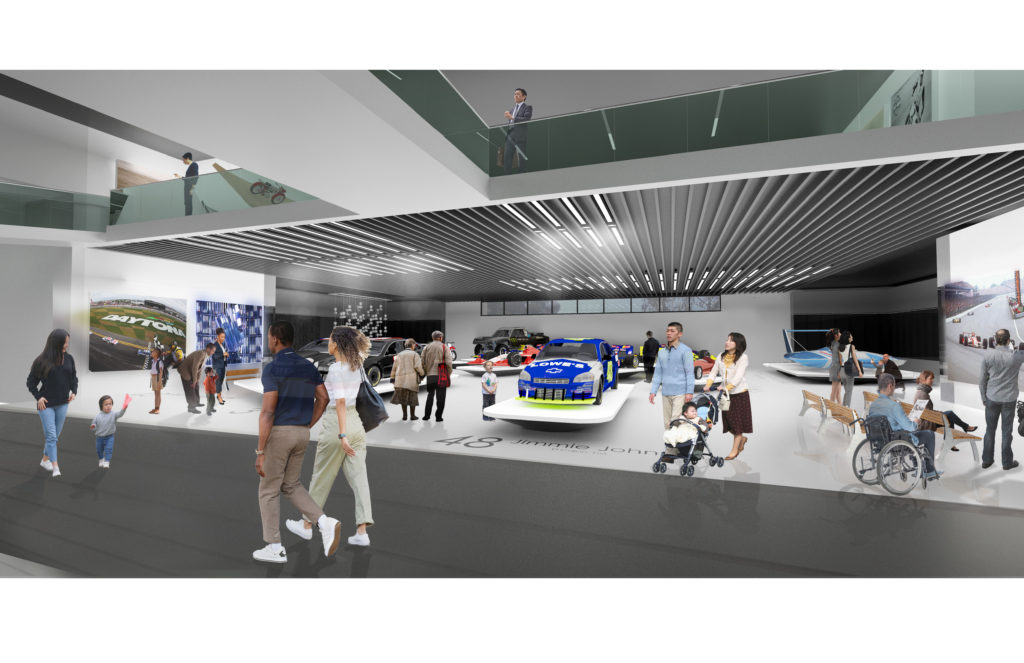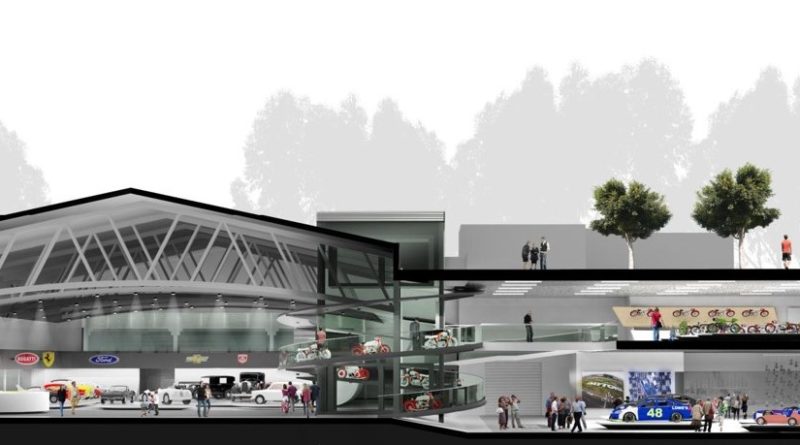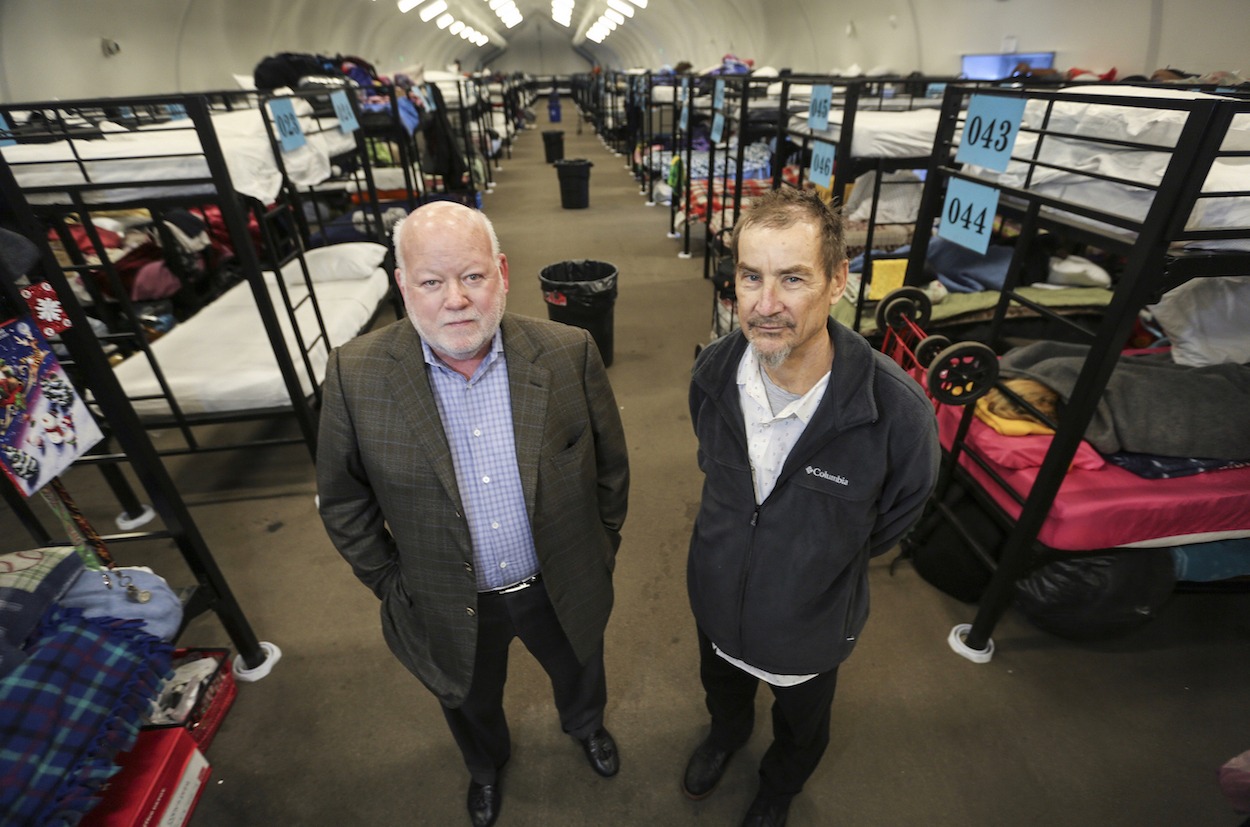The San Diego Automotive Museum: A lasting legacy drives into the future
By: Andrew Simmerman
The recent strike of the United Auto Workers (UAW) on the three major U.S. automakers has put the auto industry front and center of America’s consciousness once again. National headlines are filled with the impact on jobs and the economy that the strike brings, putting into view the broad scope of importance the auto industry has in our country. According to a report from consulting firm Anderson Economic Group, the strike that started on Sept. 15 resulted in $3.95 billion in economic losses in its first two weeks, as reported in Axios. The strike also underscores the innovation constantly at the forefront of the automobile business as worker demands include the transition to Electric Vehicles is a main topic.
While this news has national relevance, for most San Diegans cars also hold a place in our own personal histories. Who doesn’t remember the first time they got behind the wheel, filled with nerves when taking their driver’s test as a teenager? Or that first solo ride that allowed for full control of the music played on the radio? Whether it was a rundown Volvo with 250,000 miles on it or a brand-new Corvette, the relationship with our first car is a treasured memory.
It’s these histories and stories – national and personal – that are preserved and told right here in our own backyard – in Balboa Park more specifically. The San Diego Automotive Museum (SDAM) has a mission “to tell the story of the social and technological past, present, and future of motorized vehicles throughout its collections, exhibitions, and educational programs.” While the Museum has undergone a variety of iterations in its history, current renovations are underway to make it clear that SDAM has ambitions of becoming one of the nation’s greatest preservers and storytellers of the automotive industry, to be enjoyed by future generations of auto enthusiasts. And none of it would be possible without the involvement of the Barnhart-Reese Family, one of San Diego’s most revered construction and philanthropic families.

The Evolution of the San Diego Automotive Museum
The San Diego Automotive Museum building has a fascinating history: in February of 1935, the San Diego Automotive Museum was constructed as the California State Building, as part of Balboa Park’s 1935 California Pacific Exposition. The initial idea was for the State Building to be a miniature tour of California, with each of the 58 counties receiving space to display their commercial, industrial, social, and tourist benefits, with the front entrance displaying four large panels around the concave walls, depicting various periods of California’s growth. The California Pacific Exposition lasted into 1936 with over 4.5 million visitors passing through the State Building.
During World War II, Balboa Park was commandeered by the Navy, after the California State Building had already become a National Guard Armory in 1937. In the post-war era, the City of San Diego was eager for Balboa Park to become a tourist and community destination again, and the California State Building was renamed the Balboa Park Conference Center in 1948, with repairs to include resurfacing floors, new paint, and installation of a kitchen and restrooms. Throughout the 1950s, 1960s, and 1970s, the building served as an exhibit hall, hosting boat shows, aviation conventions, musical events, flower shows, and hobby group meetings, among many others.
Fast forward to the late 1970s, a group of local San Diego automotive enthusiasts sought to bring an automotive museum to San Diego. The group proposed the idea in 1979 to the San Diego City Council, who unanimously approved their now-named San Diego Automotive Museum in 1980 and granted a long-term lease to the former California State Building.
After eight years of fighting red tape and making renovations, the San Diego Automotive Museum finally opened on December 11, 1988, with its first exhibition: Power and Glory: The Evolution of Racing.
In the 35 years since its opening the San Diego Automotive Museum has captured the hearts and minds of the millions of local enthusiasts and tourists worldwide, who have visited the first-rate collection. Popular exhibits have included the award-winning Japanese Steel featuring the history of Japanese car manufacturing; Unpopular Mechanics which featured the negative reputation vehicles typically stemming from things like mechanical or design issues, radical new exteriors, or just bad publicity; Cars with Character showcased the distinct looks and abilities of an amazing variety of cars used in films and TV; Salute to the Troops; and Bootleggers (on display until February 2024). The most popular is the permanent exhibit with rotating local cars from the San Diego low-rider community.
Events such as the growing popularity of Trunk or Treat in October, March’s annual Blood Drive with the San Diego Blood Bank, monthly Cars & Coffee gathering, the growing monthly Motorcycles in the Park, an upcoming Car Rally and Golf Tournament in 2024, and the THE Party in the Park, the Museum’s annual fundraising gala attended by over 500 people each year are helping cement the Museum as the place go for family and community events for car lovers.
Today, the Museum is a living tribute to the automobile as a cultural and generational icon, led by its CEO, San Diego native Lenny Leszczynski. Lenny shares that his adoration for cars started when his uncle took him to the Petersen Museum in Los Angeles. “It was there that I discovered and fell in love with a 1964 Chevy Impala, which five years later I was lucky enough to buy,” explains Leszczynski. Passionate about SDAM, Lenny regularly invites the community to, and attends, free events. These include favorites like Cars & Coffee, Motorcycles in the Park, and family events like Trunk or Treat, with the goal of making the Museum the go-to destination for car enthusiasts. “We want this to be the place where car people go!” he told KUSI in a previous interview.
In order for SDAM to be the place where car people go, the Museum acknowledged it needed a bit of a tune-up, and it turned to valued partners and patrons to help make it happen.
Great patrons of the SDAM
Although one-time, project-based funding has accomplished a lot towards the Museum’s goals, it cannot be relied upon in the long term. The Museum relies upon community stewards and donors such as Dorothea Laub, the Berg Family Trust, the Dunn Family Foundation, and The Conrad Prebys Foundation. Additional donors include Denny Sanford, Discount Tire, the Manchester Family, and Ray Brock, among others.
For the Museum’s expansion project, it is the Barnhart family of companies who stepped in to help. Since 1983, Doug Barnhart – and the Barnhart family – have become synonymous with a portrait of a San Diego construction, civic and philanthropic leader. Barnhart built Douglas E. Barnhart Inc., along with his wife, Nancy – and later his daughter, Tami Barnhart-Reese, and son-in-law West Reese, into a vivid example of construction industry leadership.
During Barnhart’s ownership of the construction company that bared his name, he oversaw large, iconic San Diego projects including Petco Park; the Terminal 2 expansion at Lindbergh Field; the then San Diego Chargers Training Facility; SDSU’s Tony Gwynn Stadium; SDSU’s College of Arts & Letters; the USD Shiley Theater Renovation; Poway City Hall; Coronado Country Club; Viejas Casino, and the San Diego Supercomputer Center. It’s the Barnhart-Reese Construction company that has found cost-cutting ways to lead the latest renovations at SDAM.
In addition to their company’s role in construction projects at the Museum, Doug and Nancy Barnhart have personally donated to the Museum, making financial contributions to the library and worked to reduce construction costs during the two-year library project as well as to the Museum’s Gift Shop which was also in need of upgrades. Honoring their giving, the modern space is now called the Doug and Nancy Banhart Gift Shop and includes a new check-in desk to welcome guests and new flooring to add to the overall guest experience when they arrive.
This type of support of the San Diego Automotive Museum isn’t all that surprising given their philosophy of, “It’s not the person or company, it’s about the project and what it does for the community,” according to Doug Barnhart. In that spirit, the Barnharts have frequently contributed time, labor and materials to build many projects for nonprofit organizations throughout the region, including The Ronald McDonald House, Becky’s House, the San Diego Center for Children, and the SDAM. Their impact is not just made through donations, it’s embedded in the company’s ethos. “I get a lot of credit for the nonprofit charitable projects but deserve very little of it. I had a lot of help from business partners, Barnhart employees and others in the community.” Auto enthusiasts walking through the doors of SDAM everyday benefit from this generosity, and it’s the exact reason Barnhart-Reese was turned to as major renovations were being planned.

Renovating to reflect the innovative industry
In 2021, Mr. Leszczynski and the Board of Directors, along with the support of Balboa Park’s Committee of 100, embarked on a journey to upgrade the Museum’s interior and exterior and renovate it to its 1935 outward façade and inside modernizations and turned to trusted partner Barnhart-Reese Construction Inc. to lead the journey.
Barnhart-Reese Construction also began the $760,000 remodel of the Berg Family Automotive Library in late 2022, renovating the 3,200 square-foot library in close collaboration with the SDAM team to ensure every detail reflects the image of the San Diego Automotive Museum in the community. The Automotive Library, made possible by a generous gift from the Berg Family Trust and through the Museum’s community of donors, hosts an extensive automotive-related library with over 4,000 books, approximately 40,000 magazines, and 3,259 repair manuals. The unique collections and paper archive number about 70,000, including ads, automotive parts, and other ephemera. Designed by Roesling Nakamura Terada Architects, the grand re-opening of the Berg Family Automotive Library and Skeets Research Center will take place in late 2023, with the official ribbon cutting in January 2024.
Outside, a recently completed restoration reflects the building’s original 1935 façade, with beautiful Mayan-revival accents, new paint, and the four restored tile murals depicting California’s industrial progress during the Great Depression. Barnhart-Reese Construction oversaw the installation of the new tiles, helping bring a 1935 black and white photo of the murals, into a colorful and historical entrance to the Museum, while the parking lot directly in front of the Museum was transformed into a beautiful park, thanks to the City of San Diego, and features trees, grass, and event space.
In 2021, the Museum signed a 25-year lease with the City of San Diego, which includes a stipulation giving the SDAM permission to expand. The new building will create more exhibition areas, a newly constructed entryway, event space, and classrooms. The plans take the current structure from 37,000 square feet to 56,000 for additional exhibition areas to display more cars and motorcycles. The event spaces include the Museum floor, a more robust board and meeting room, and a 7,500 square-foot outdoor area overlooking Balboa Park. The expansion will include classroom spaces designated primarily for education programs. Youth will meet with mentors, study in the classroom, or work interactively on vehicles or motors.
“We are thrilled by our latest renovations, which is modernizing our museum for enjoyment of future generations of auto enthusiasts,” says Leszczynski, adding, “but I’d be remiss not to mention that none of this would be possible without the generosity and support of the Barnhart-Reese Family.”
A $23M capital campaign takes off
The latest renovations of course don’t come without major costs. In order to complete the expansion its 38,000 square foot building with an additional 18,000 square feet of space for an incredible display of cars and motorcycles, in January 2023 the San Diego Automotive Museum launched a Capital Campaign to raise $23 million. SDAM’s Balboa Park lease is the only one among the many wonderful museums on the property whose lease allows such an expansion.
The new San Diego Automotive Museum’s 56,000 square foot facility will immediately place SDAM among the most noteworthy presenters of classic automobiles and motorcycles in the nation and position us as a prime attraction at Balboa Park.
The SDAM’s Capital Campaign expansion aims to transform the Museum into a world-class venue that can accommodate more visitors and showcase more remarkable automotive vehicles. With the modernization of its building, SDAM can reimagine its library and event spaces, expand its street gallery and gift shop, and increase the capacity for new and permanent exhibits. These upgrades and additions will help SDAM become a premier destination for anyone who loves cars and culture. It will also include a more hands-on Children’s Exploration Area, Interaction Education Displays, and a Motorcycle Gallery to display the Museum’s collection of over 30 motorcycles, among many other upgrades, to truly make it a world-class automotive museum.
Expanding also means more access to underrepresented communities
CEO Leszczynski believes the term “expansion” should mean more than just growth of the Museum’s physical space, referring to an expansion of existing and new programs that will benefit underrepresented communities.
Combining his passion for automobiles, mentoring, and youth education, Lenny created the Career Technical Education Academy for low-income youth in San Diego. The Academy equips teens with automotive industry knowledge, budget management, and provides mentors for a successful transition into adulthood. Leszczynski explains, “I’m excited for us to take these kids and plug them into every automotive immersion experience we can think of.” And that’s what Lenny does, connecting youth, visitors, and the community to the car culture’s past, present, and future. The Career Technical Education Academy is partially funded by the Museum’s annual event, THE Party in the Park, now in its third year, an event that the Barnhart- Reese family sponsors each year.
The Museum is also proud of its many community partnerships. In 2022, Lenny asked the youth of Morse High School Auto Shop to pinstripe the Museum’s 1913 Cadillac Model 30 before the Las Vegas Concours d’Elegance. It went on to win Best-in-Class for the “Antiques Through 1934” category. And through their partnership with the San Diego Blood Bank, the Museum holds an annual blood drive where free family memberships to the museum are offered to donors along with meet and greets with local speedway drivers like Sunny Trent.
Additionally, through its community collaboration with the United Lowrider Coalition, the Museum added signs and other ephemera related to cruising ordinances into SDAM’s collection and gathered interviews, vehicle data, and more to enrich the archive with Latino/Chicano voices. Lenny also worked with the curatorial team to set up a permanent exhibit of lowrider vehicles, which features regularly rotated local cars. This is of particular relevance given the recent passage of California Assemblymember David Alvarez’ Assembly Bill 436, backed by the United Lowrider Coalition, that will legalize cruising statewide if signed by Governor Gavin Newsom.

Becoming the 2024 World Design Capital
The success of the capital campaign will infuse funding into these programs and partnerships and more like them, and the timing of this reimagining of the SDAM couldn’t come at a better time as San Diego – along with our southern neighbor Tijuana, Mexico – will launch into the global design spotlight as the 2024 World Design Capital.
Every two years, the World Design Organization designates a World Design Capital to recognize and showcase a city or region’s effective use of design in driving economic, social, cultural and environmental progress. The cities of San Diego and Tijuana represent the first cross-border region to be designated World Design Capital and the first time a U.S. city has been selected for this prestigious distinction.
“Having been selected as the World Design Capital is a recognition of our region’s reputation for innovation and of the exciting arts and cultural offerings on both sides of the border,” said San Diego Mayor Todd Gloria in a press release. “World Design Capital San Diego Tijuana 2024 will provide a yearlong platform to showcase design, and it will further enhance cross-border collaboration while raising the profile of our binational region on the global stage.”
This honor is a major recognition that San Diego’s arts institutions and museum ecosystem – to which the San Diego Automotive Museum and Balboa Park belong – are world-class.
The auto industry itself is also experiencing a major cultural moment, with auto racing exploding in popularity thanks to expanded access to programming and documentary shows like Netflix’s Drive to Survive series about Formula 1 racing.
While you might not have previously known, it’s clear that The San Diego Automotive Museum is making major moves to cement itself as one of San Diego’s most globally prominent cultural institutions.
For additional information about the San Diego Automotive Museum, please contact: Sharon Smith, Community Outreach and Strategic Partnership Director at 619-987-8020 sharon@sdautomuseum.org
Born and raised in San Diego, Andrew Simmerman is a non-profit leader, educator, entrepreneur, and communications professional currently serving as Director of Community Relations with KIPP SoCal Public Schools.



